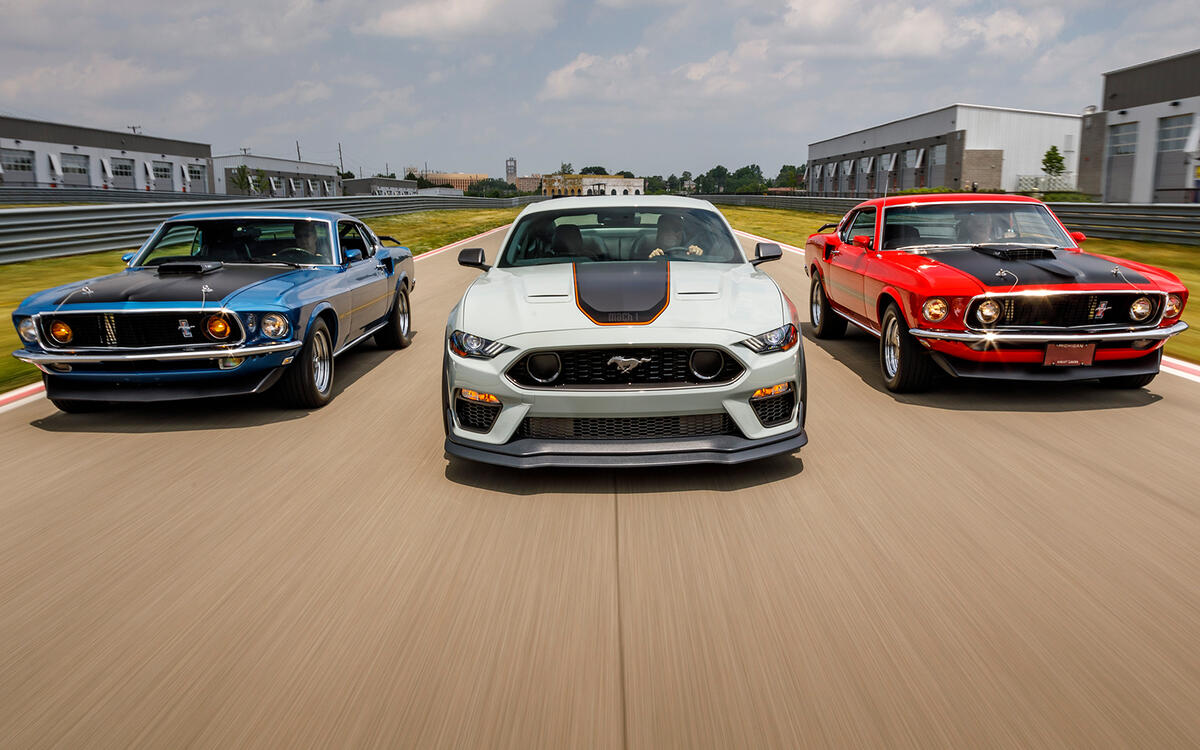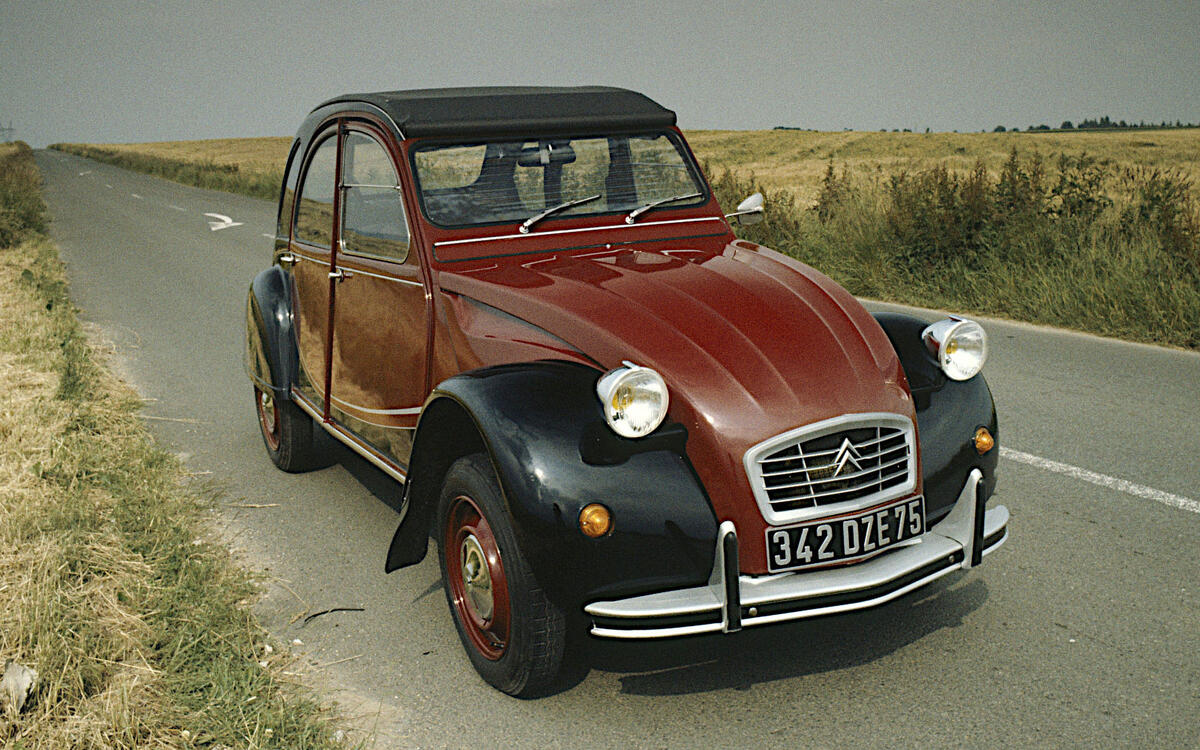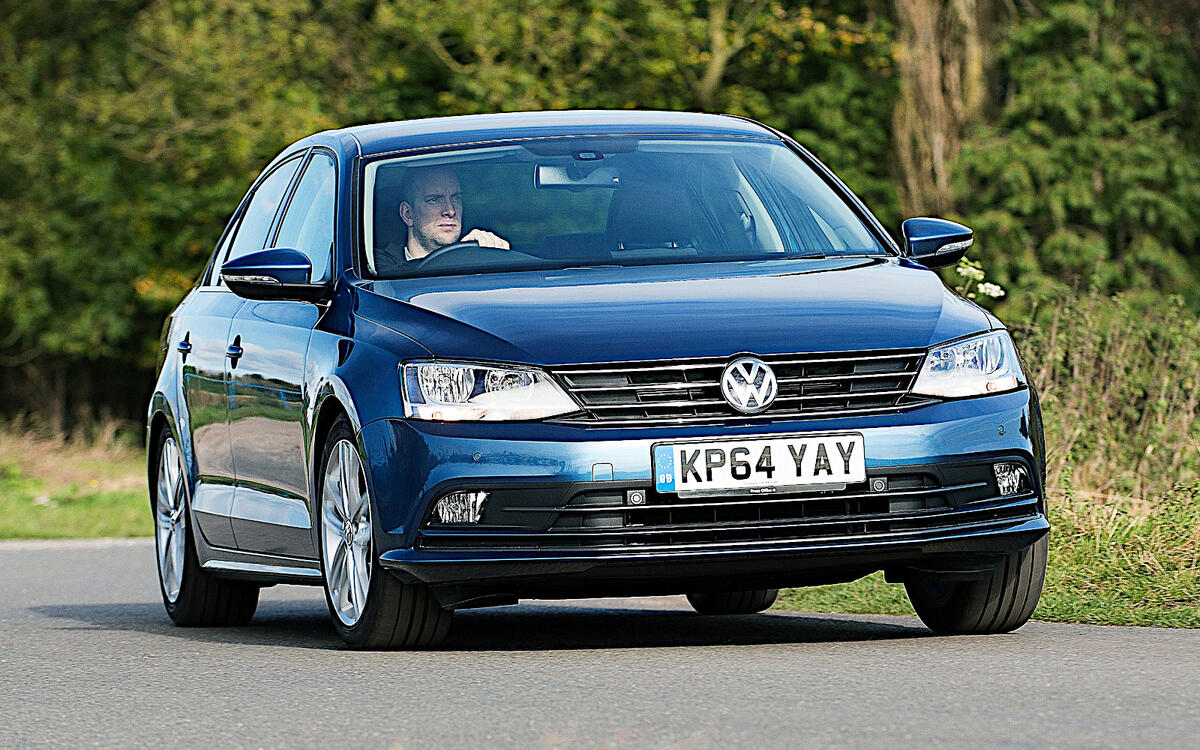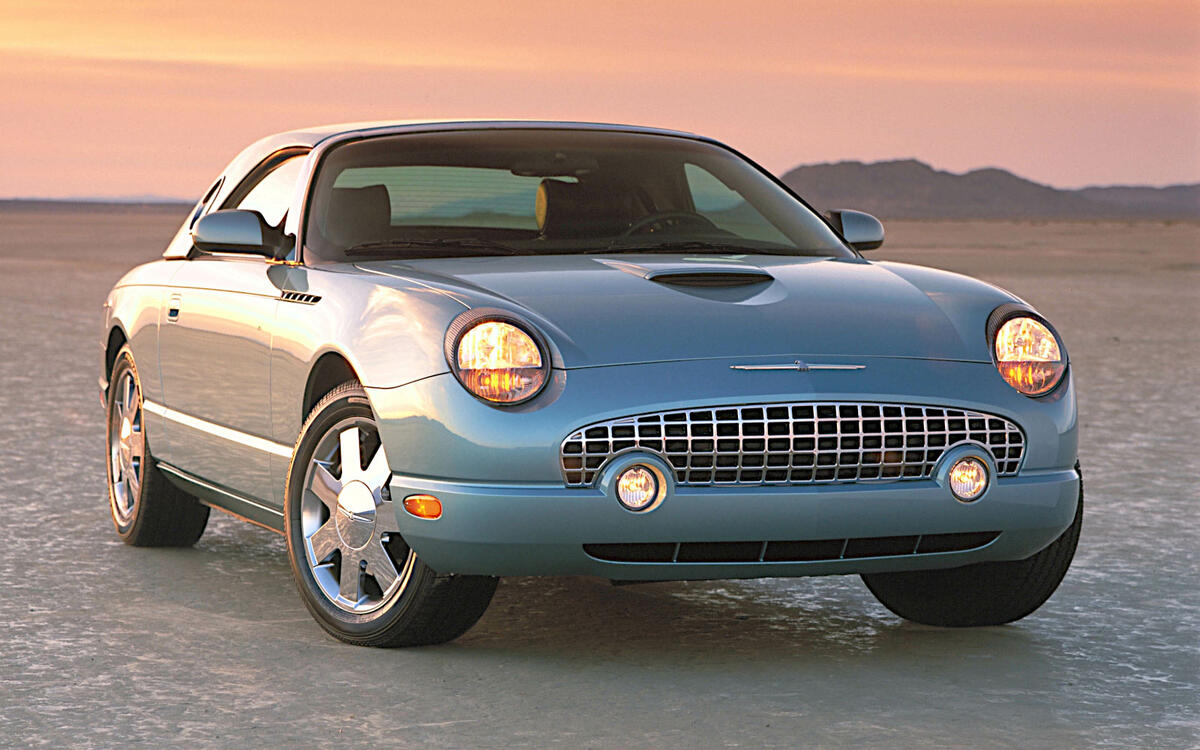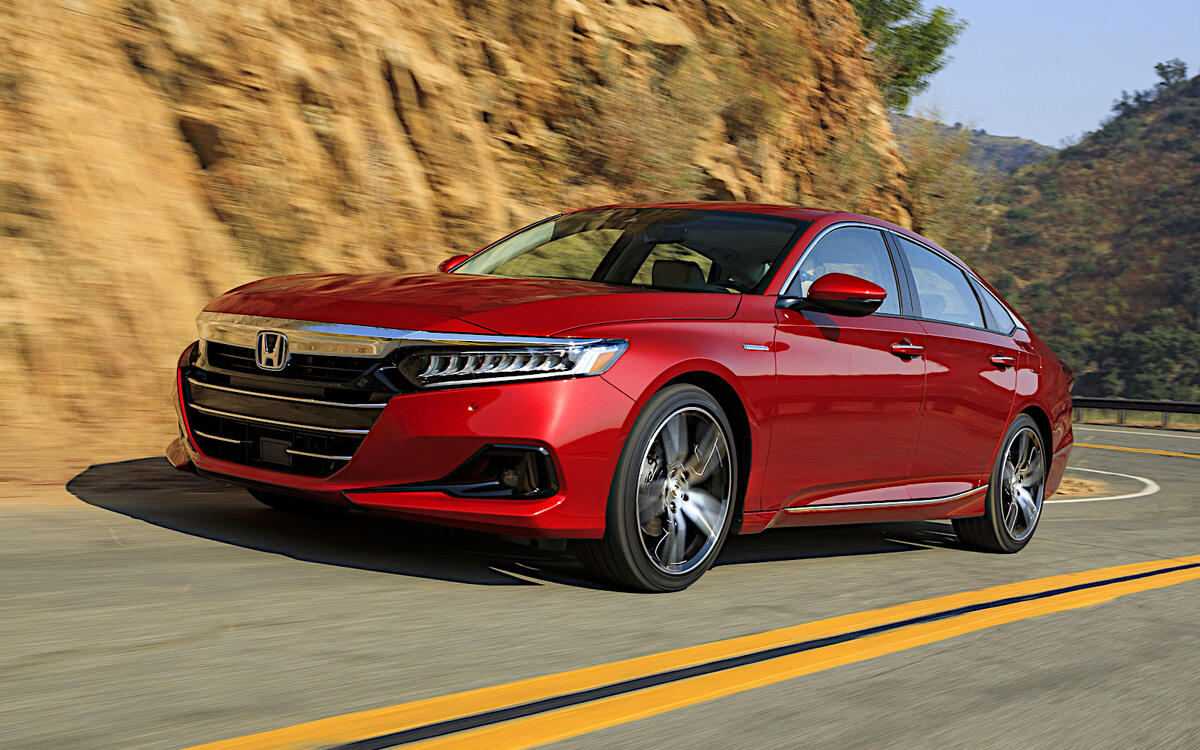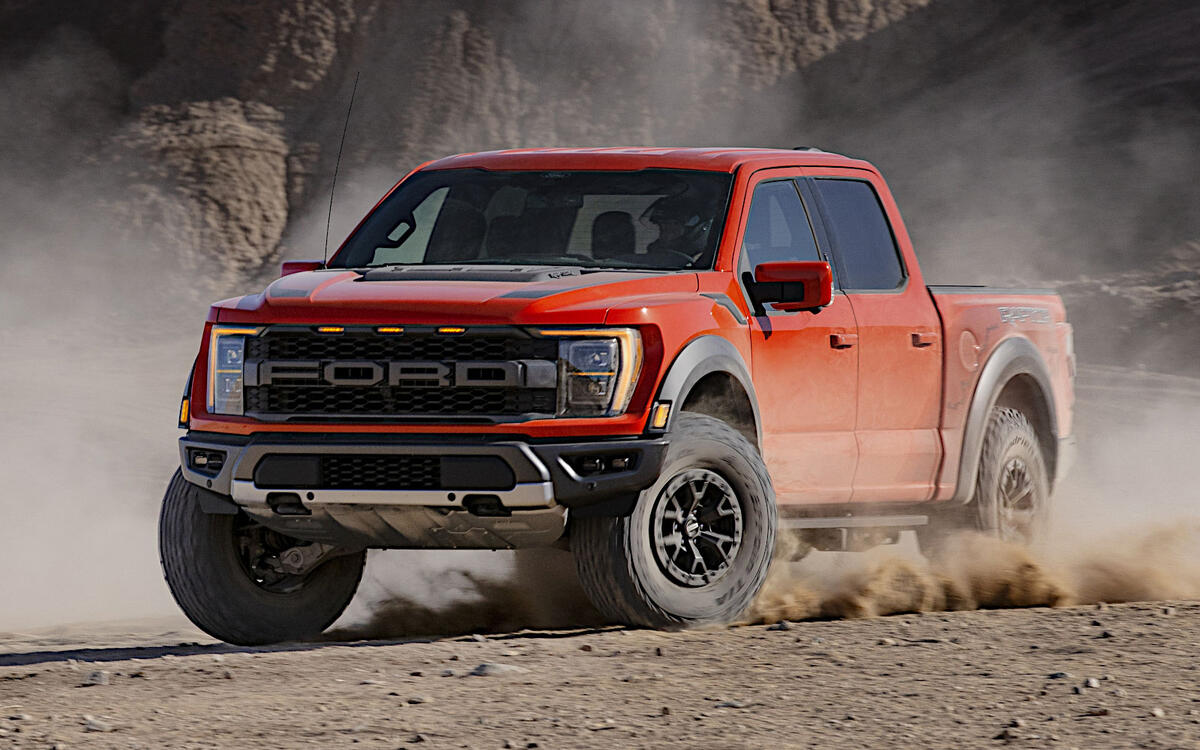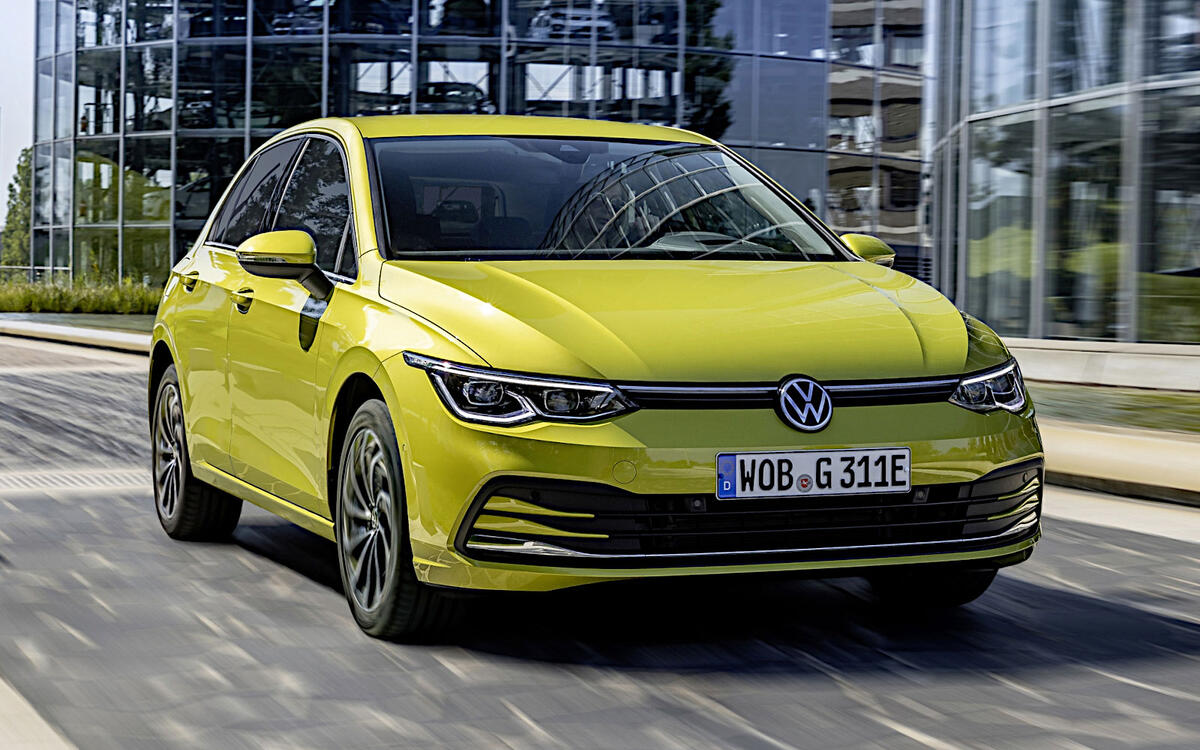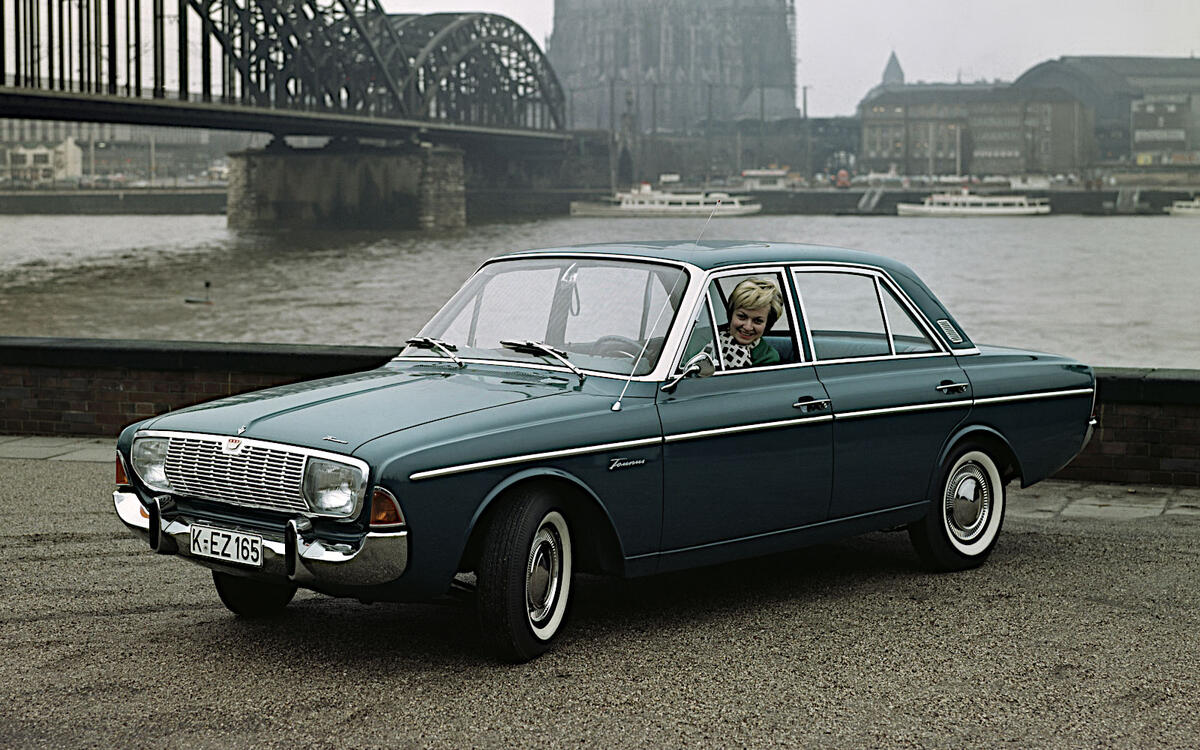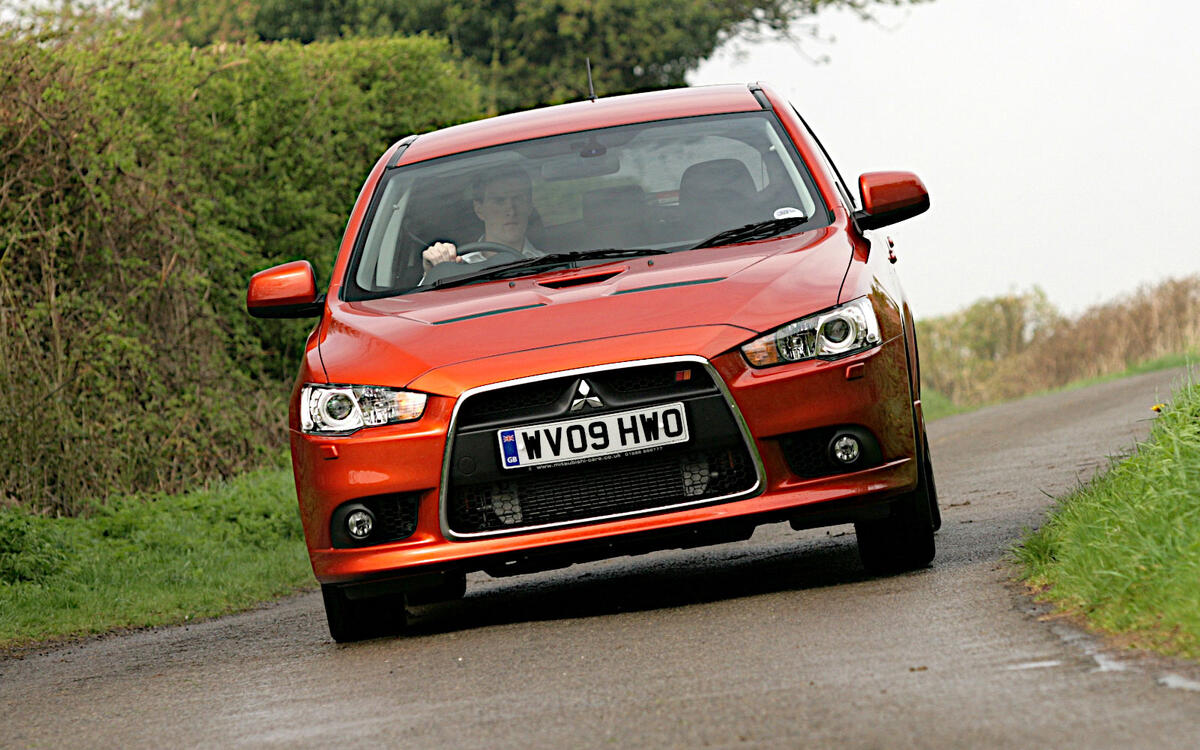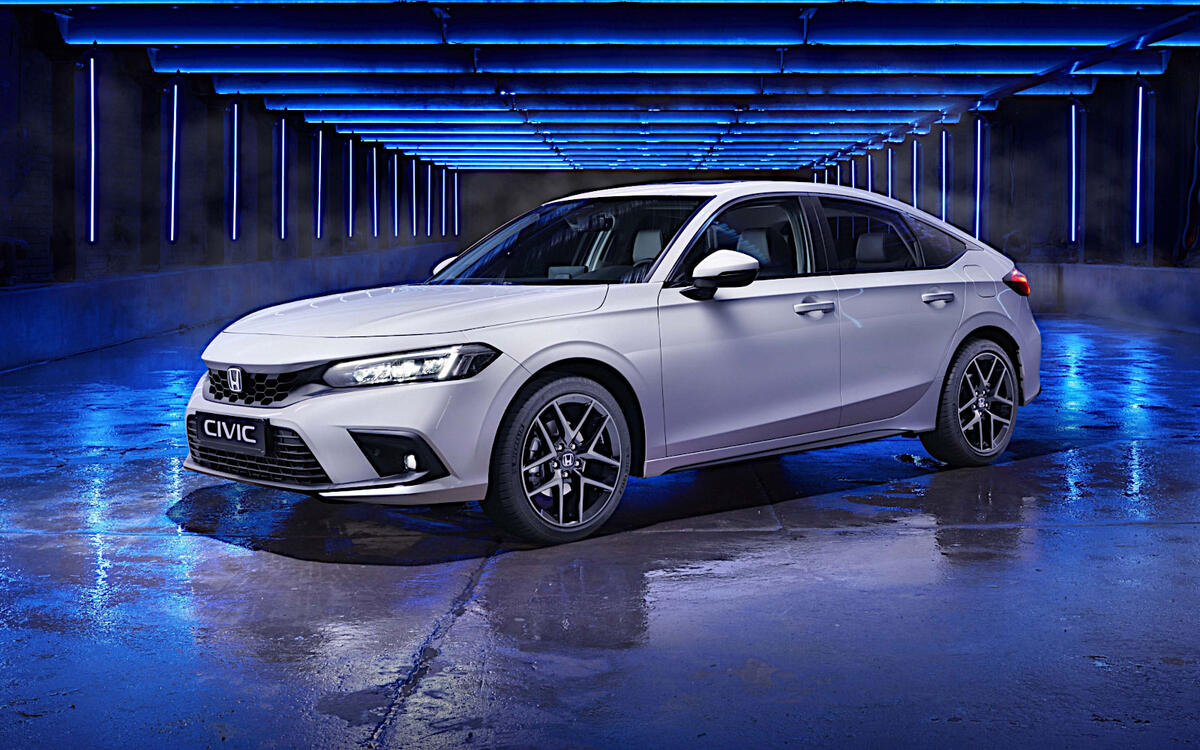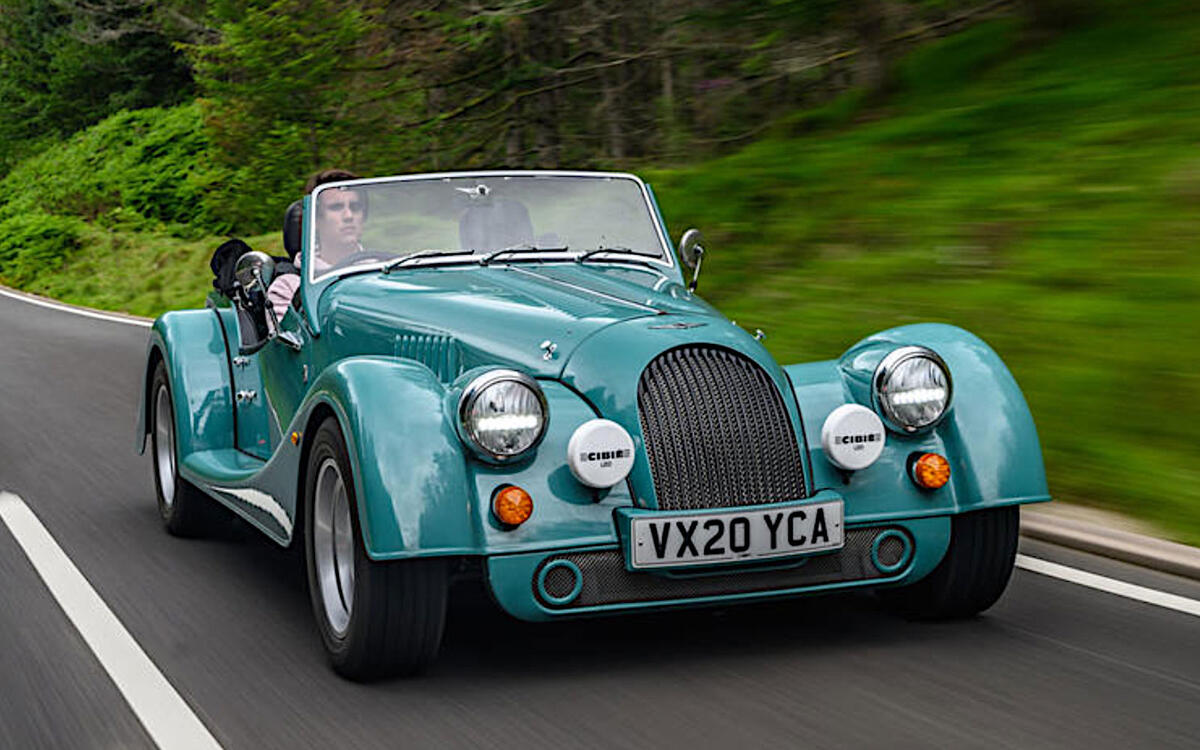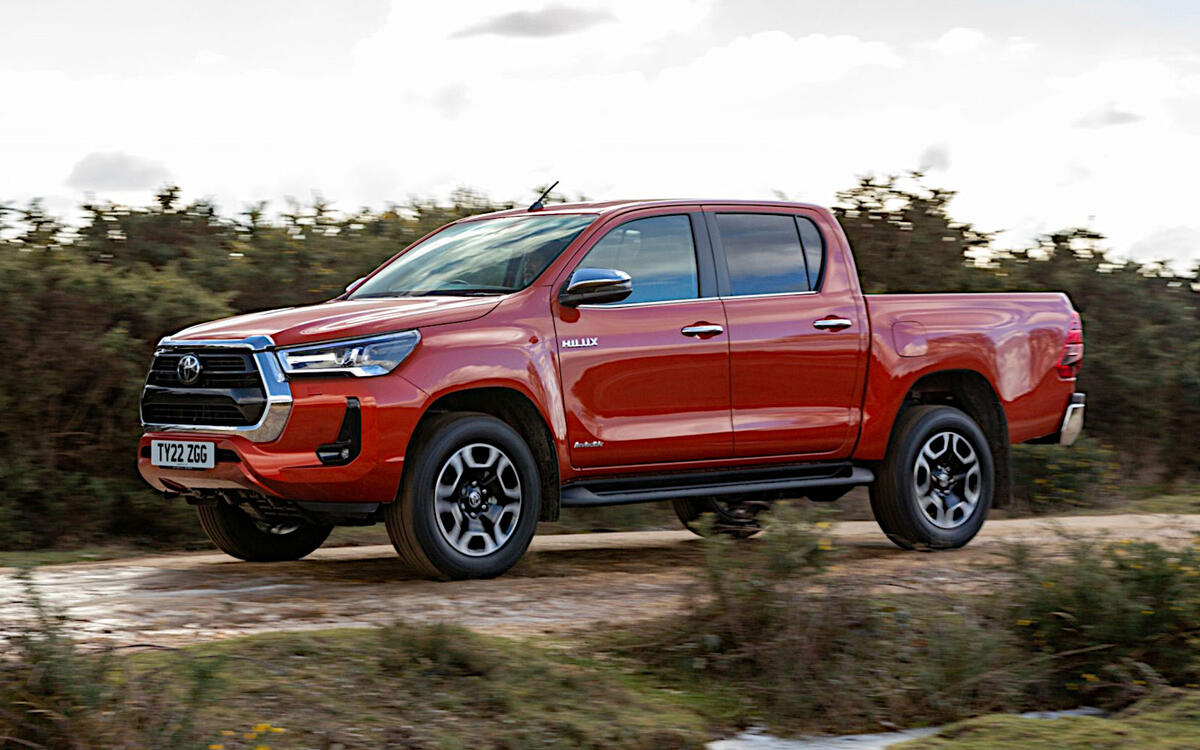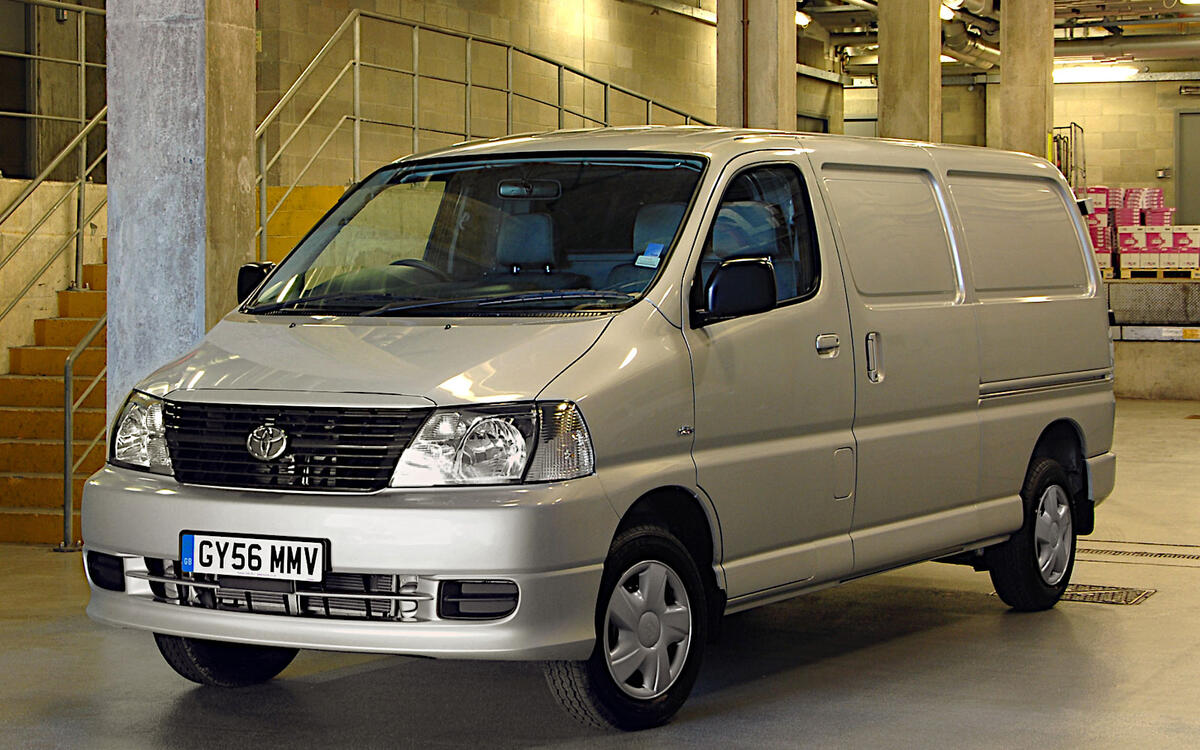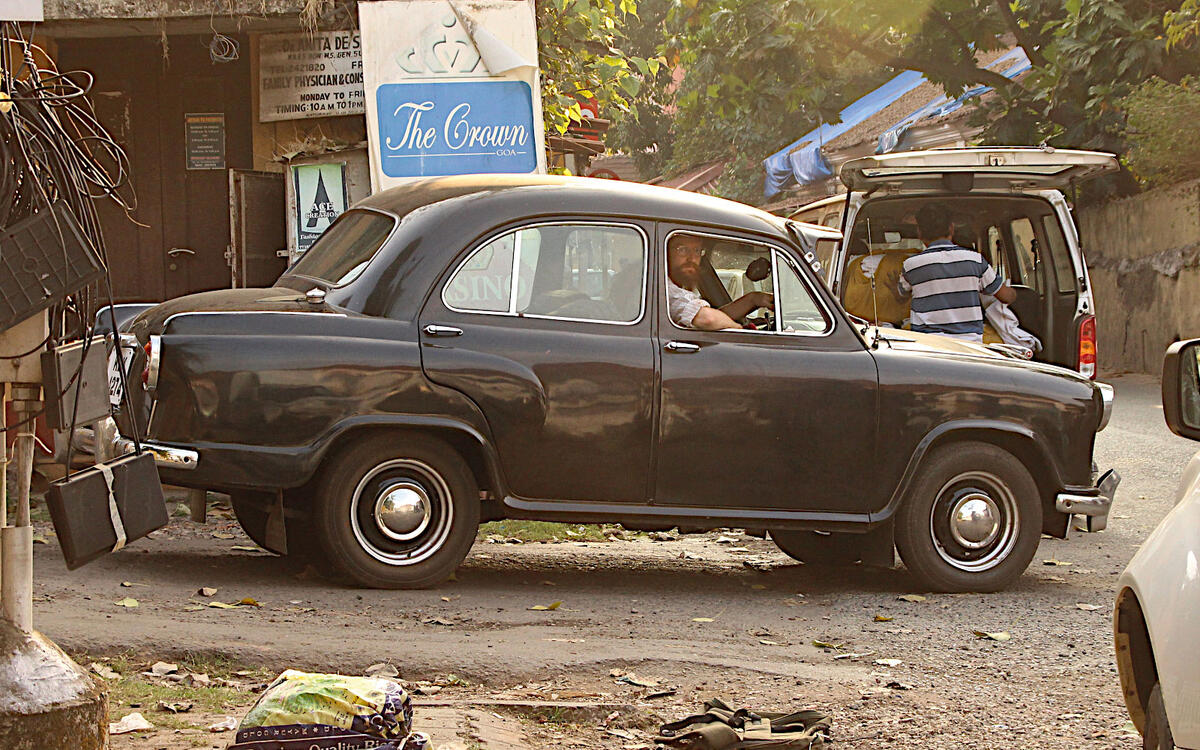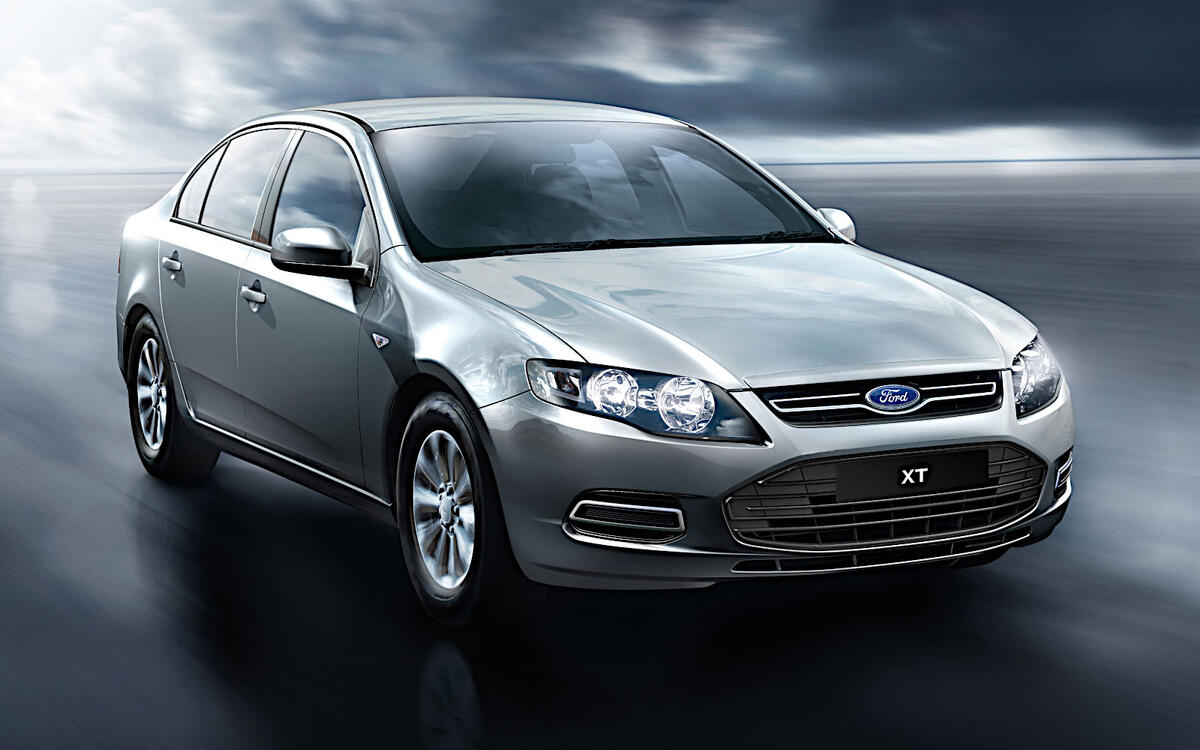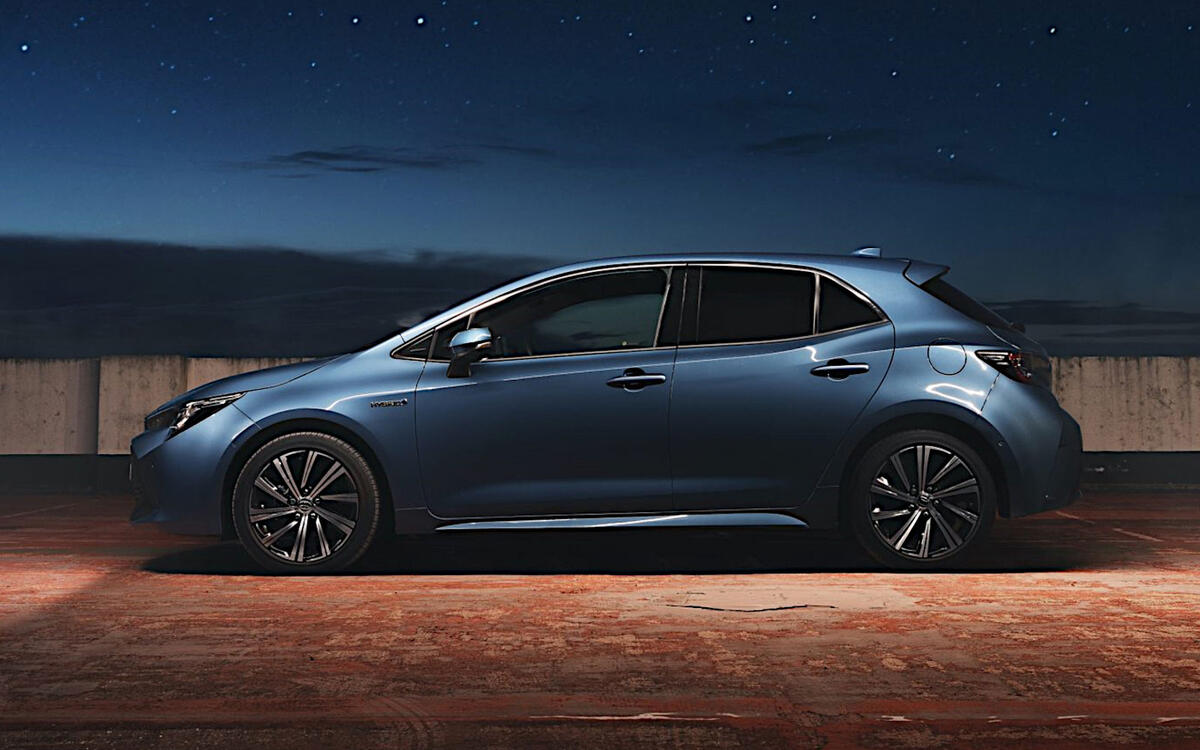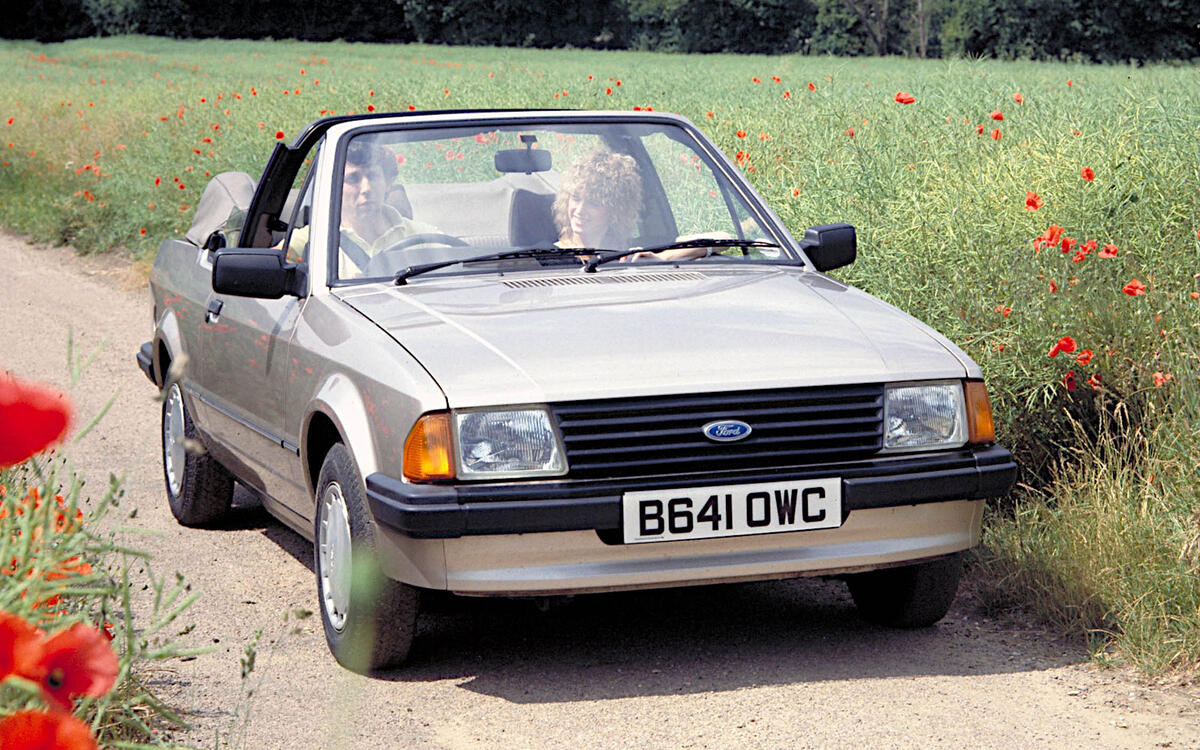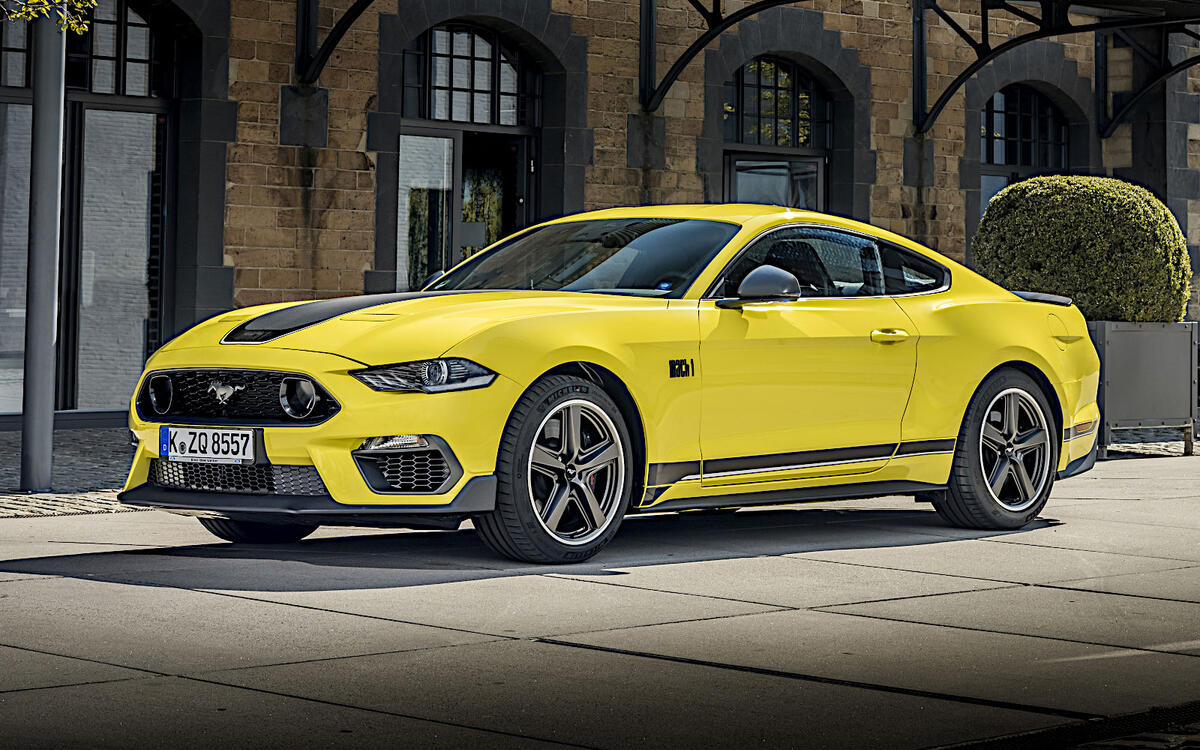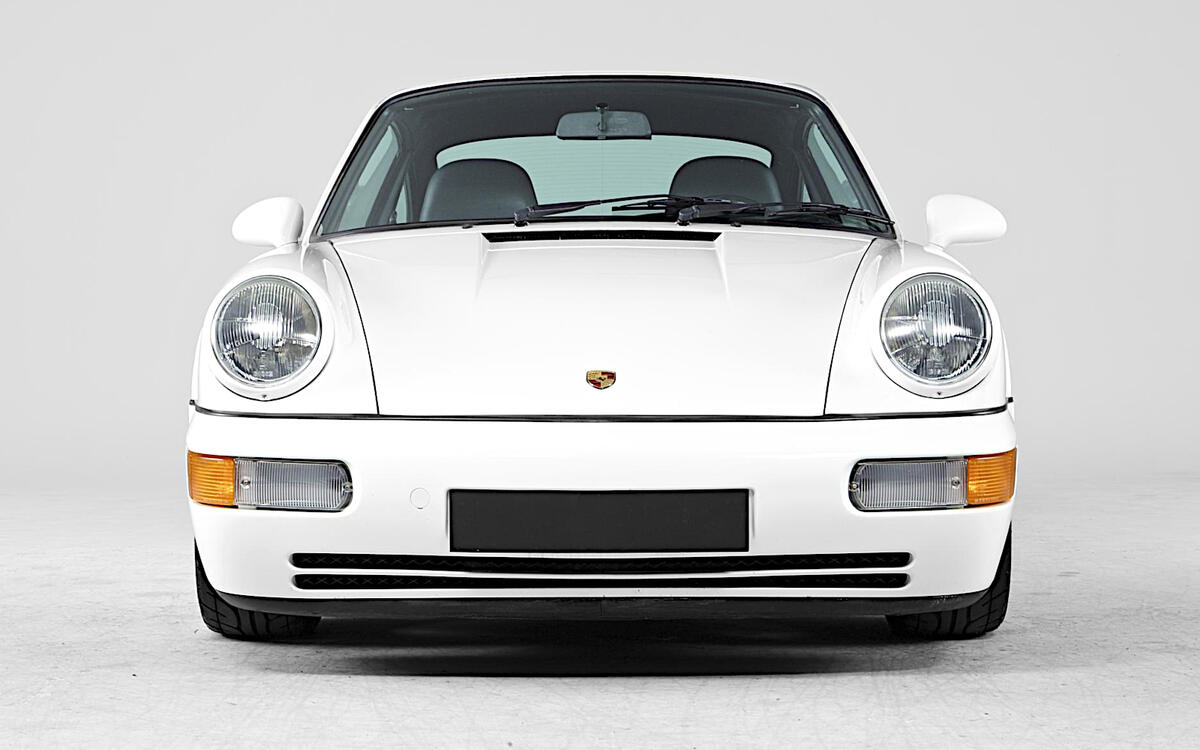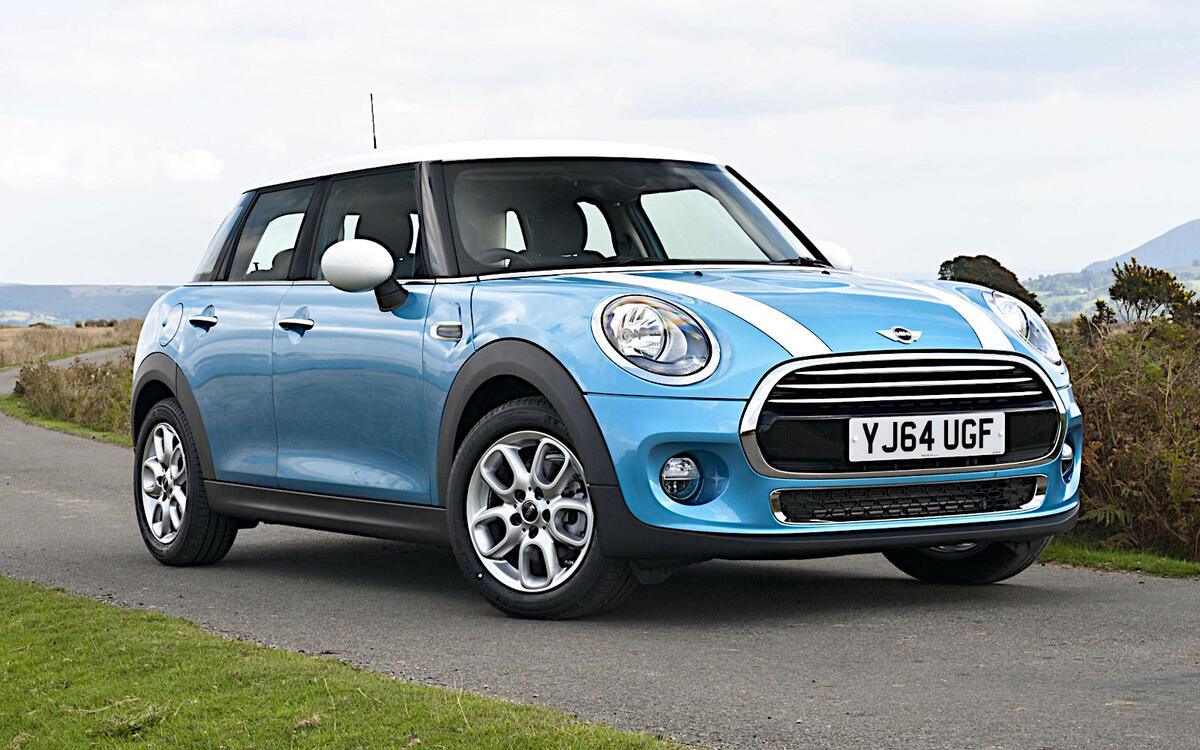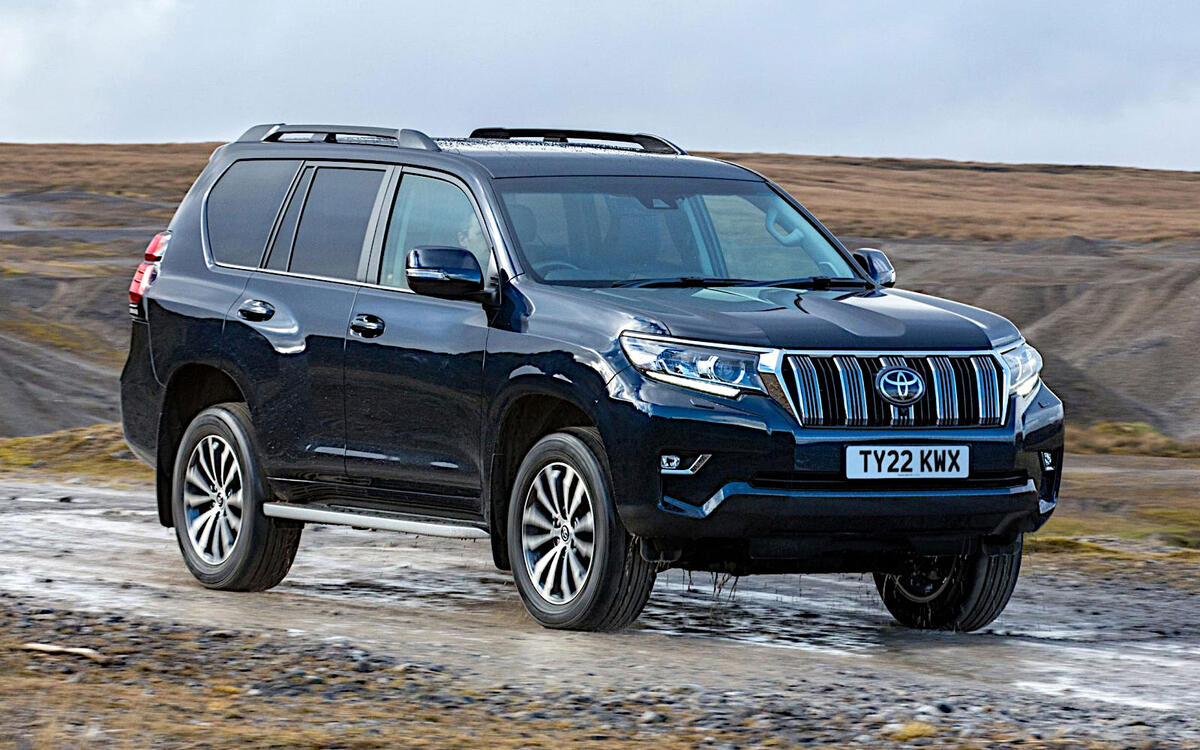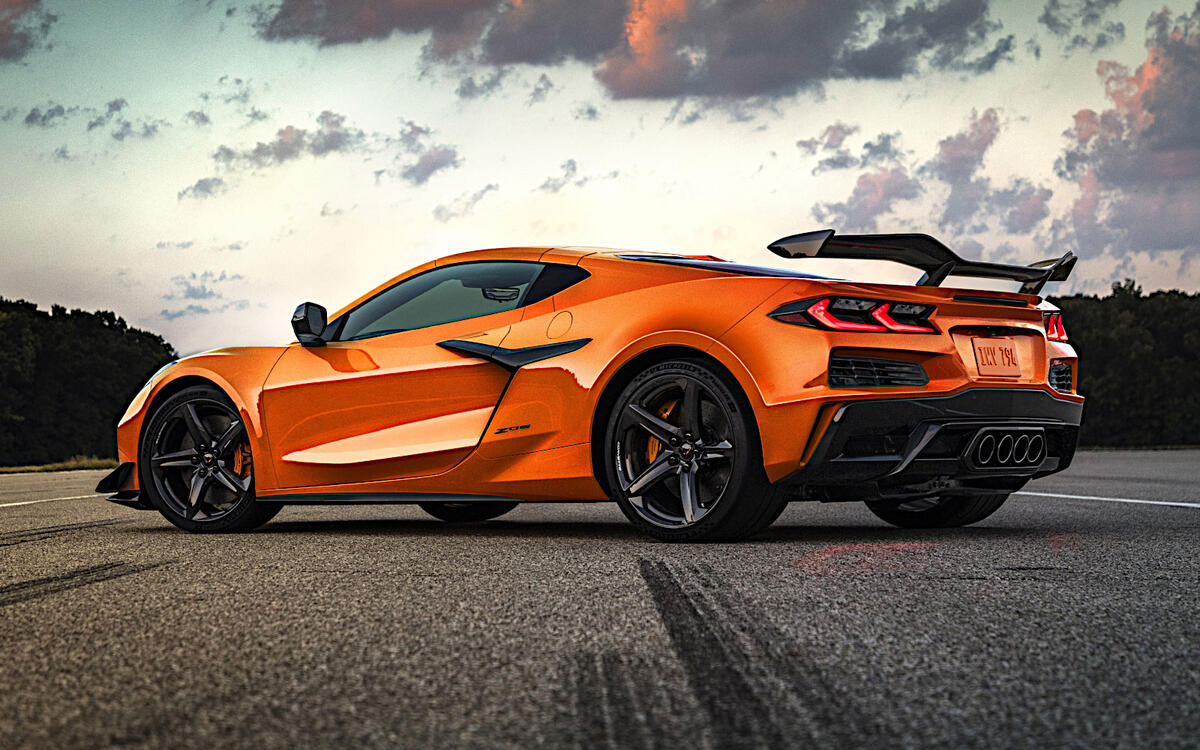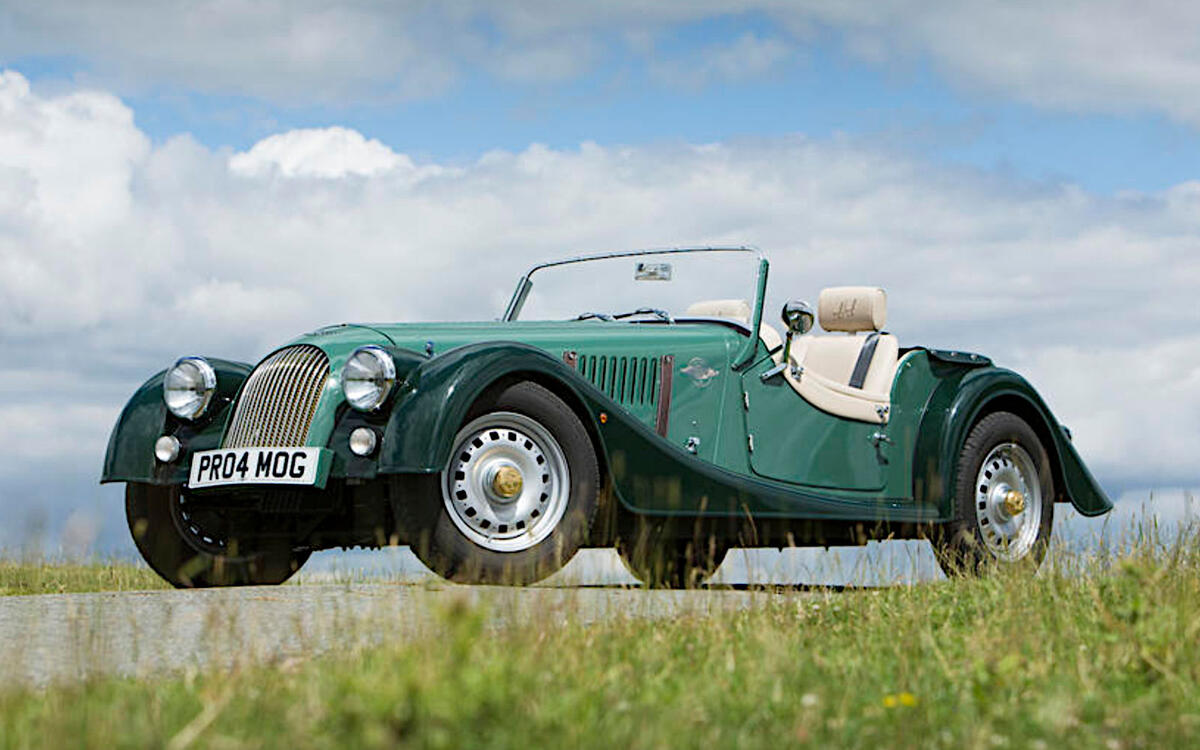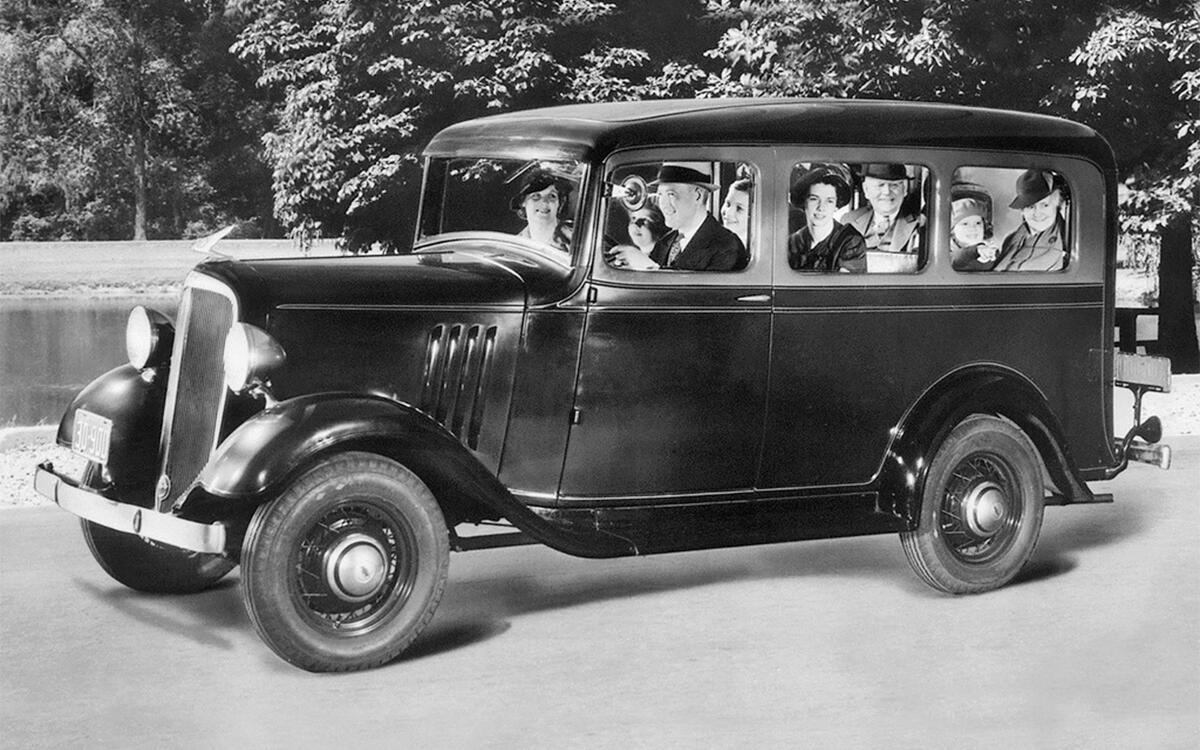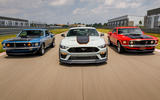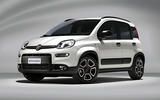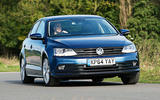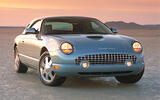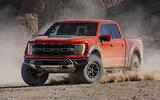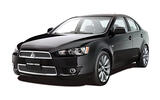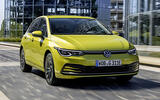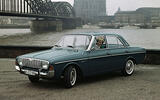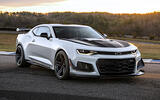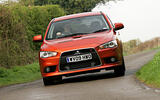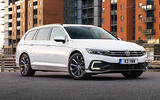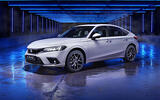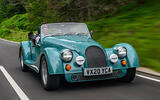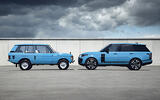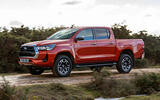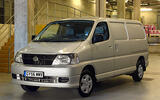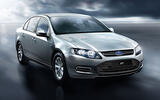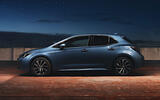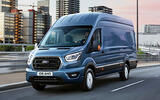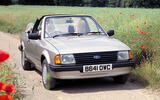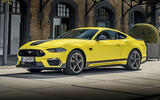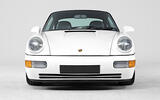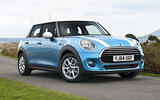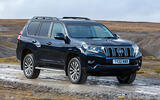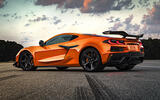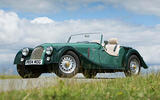 Slide of
Slide of
Some cars remain on the market for a very long time.
But car names can hang around for even longer as they pass from one generation to another. To illustrate how far this can go, we’re listing 30 nameplates which have been in production (continuously or otherwise) for over four decades, in ascending order of survival.
To keep things under control, we’re not including any name which includes the word Class or Series, since cars are never badged like that. And, before anyone asks, the Volkswagen Beetle doesn’t qualify because the first (and longest-lived) generation didn’t officially have that name.
 Slide of
Slide of
Citroen 2CV: 1949-1990 (41 years)
The 2CV is an unusual member of this party in that it remained largely unchanged for its entire production run, barring a few details like a gradual increase in engine size from 375cc to 602cc. It might have lived a lot longer, since it was designed in the late 1930s, but its introduction was delayed by the onset of the Second World War.
The 2CV family included the Ami, the Dyane and the Méhari, but the original model easily outlived them all.
 Slide of
Slide of
Land Rover: 1948-1990 (42 years)
Land Rover was the name of a specific model within the Rover line-up (admittedly one available in several forms) until the Discovery came along to confuse matters.
At this point, the management decided to call the current version of the original model Defender. Land Rover became a brand name rather than a nameplate, and therefore beyond the scope of this feature.
 Slide of
Slide of
Fiat Panda: 1980-present (42 years)
Beyond the fact that they are both relatively small, there is almost no connection between today’s Panda and the incredibly basic but very effective car introduced in 1980. Nevertheless, this is a type of car Fiat is very good at. The first version, which lost out only to the Ford Escort in the 1981 Car of the Year awards, remained in production until 2003, and its home nation is still covered with them, a testament to both effectively simple mechanicals and a reasonably forgiving climate.
The second – almost a flash in the pan compared with other Pandas – lasted for eight years, while the current model has already been with us for 11.
 Slide of
Slide of
Volkswagen Jetta: 1979-present (43 years)
In most markets, Jetta has been Volkswagen’s name for the saloon derivative of every Golf except the third and fourth, which were called Vento and Bora respectively. Globally, however, there has been no interruption, since the Jetta name was also used for cars built in China while Ventos and Boras were being sold elsewhere.
Jetta is so successful in the world’s largest car market that it became a brand name there in 2019, though it remains a nameplate everywhere else.
 Slide of
Slide of
Ford Thunderbird: 1955-97, 2002-2005 (45 years)
For more than the entire production life of the Citroen 2CV, Ford came up with ten generations of the Thunderbird, gradually moving it away from its sporting roots. An eleventh version – the only one apart from the first with two rather than four seats – was introduced in 2002, but it didn’t sell well, and was discontinued after just three years.
By the standards of most manufacturers, 45 years is a strong run for a single nameplate, but Ford beat it no fewer than six times, as we’ll see.
 Slide of
Slide of
Honda Accord: 1976-present (46 years)
In a way, Honda has packed more than 46 years’ worth of Accord production into that time period, since the nameplate has sometimes been used for different models sold in different countries.
In addition to Japan, Accords have been built in Honda’s Maryland plant in Ohio since late 1982. The seventh generation (of ten so far) was the first available with a diesel engine, a type of motor Honda had shied away from in the past but was forced to include to maintain sales in Europe.
 Slide of
Slide of
Ford F-150: 1975-present (47 years)
The Ford F-Series truck has been in continuous production since 1948, and is now in its 14th generation. However, F-Series is not a nameplate, because no individual example has ever been called that.
Many, however, have been called F-150. The name was introduced (as F150, without the hyphen) in 1975, to denote a specific size of truck called the heavy half-ton, but it now applies to all F-Series sold for passenger rather than commercial use. Annual sales have exceeded 700,000 every year since 2013.
 Slide of
Slide of
Mitsubishi Galant: 1969-2017 (48 years)
If we’re going to be picky about this, Galant production began in 1969 and continued for 43 years until the nameplate was dropped in 2012.
However, the ninth-generation Mitsubishi Lancer was sold in some markets as the Galant Fortis for five years after the discontinuation of the ‘proper’ Galant.
 Slide of
Slide of
Volkswagen Golf: 1974-present (48 years)
While some other manufacturers occasionally change the names of their mid-sized hatchback, Volkswagen has remained loyal to Golf for nearly half a century. Okay, Rabbit and Caribe have also been used, and saloon versions are usually called something else, but there have been Golfs every year since 1974.
Golf is one of only two nameplates to have been applied twice to cars which won the Car of the Year award, the other being Renault Clio.
 Slide of
Slide of
Ford Taunus: 1939-42, 1948-94 (49 years)
The former Ford Germany began using the Taunus name in 1939 for a derivative of the Ford Eifel. From 1970, the Taunus was the same thing as the car marketed in the UK as the Cortina.
Although the Cortina made way for the Sierra in the early 1980s, Taunus production continued in Argentina for several years, and then switched to Ford Otosan in Turkey. In that sense, the Cortina/Taunus actually outlived the Sierra, since it was still being built in the early days of the Mondeo.
 Slide of
Slide of
Chevrolet Camaro: 1966-2002, 2009-present (49 years)
The Camaro nameplate has been around for 56 years, but it has not been used continuously. It was dropped after four generations in 2002, then brought back for a slightly retro-styled but otherwise completely modern vehicle seven years later.
Camaro production will extend beyond half a century, but not by much. The 2024 model year version is scheduled to be the last.
 Slide of
Slide of
Mitsubishi Lancer: 1973-present (49 years)
The first Lancer made its debut in 1973, and quickly developed a reputation as a fine long-distance rally car, winning the Safari and Southern Cross events on several occasions. The Lancer name was subsequently used for eight further generations.
If you’re wondering why we’re claiming that the Lancer is still around even though you haven’t heard about it for a while, the answer is that it has survived in Taiwan, where you can buy a brand new Grand Lancer today.
 Slide of
Slide of
Volkswagen Passat: 1973-present (49 years)
While the Golf was the first front-wheel drive car with a watercooled engine wholly developed by VW, it was preceded by the mechanically similar K70 (which was almost entirely the work of NSU) and the Passat (Volkswagen’s version of the slightly earlier Audi 80).
While the K70 is largely forgotten, the Passat has continued for nearly half a century. It’s the largest of VW’s popular non-SUV models, though smaller than the much less successful Phaeton. Only the estate version is now built in Europe, but the saloon is still being manufactured in China.
 Slide of
Slide of
Honda Civic: 1972-present (50 years)
The Civic started out as a replacement for the short-lived Honda 1300, which showed that the company’s insistence on using an air-cooled engine in a small family car of the late 1960s had been a mistake.
Now in its 11th generation, the Civic has been around for half a century. Power outputs of recent models have exceeded 300bhp, a figure nobody could have imagined in the early days of the nameplate.
 Slide of
Slide of
Morgan Plus 4: 1950-69, 1985-2000, 2005-present (51 years)
The Plus 4 nameplate has been around for 72 years, but production was interrupted twice during that period.
The original and current models look very similar, but there have been many developments. Today’s Plus 4 is based on an aluminium platform, while power is provided by a twin-turbo 2.0-litre BMW engine rather than the 2.1-litre Standard Vanguard unit used back in 1950.
 Slide of
Slide of
Range Rover: 1970-present (52 years)
The Range Rover situation is pleasantly complex, for those who like that sort of thing. Range Rover is essentially a sub-brand of Land Rover, which has been used in recent years for the Sport, the Evoque and the Velar.
However, top-of-the-line models have always been known simply as Range Rover since the original luxury off-roader was introduced in 1970. In that context, Range Rover is also a nameplate in its own right, and therefore qualifies for inclusion in this list.
 Slide of
Slide of
Toyota Hilux: 1968-present (54 years)
A shortened version of the term ‘high luxury’, the Hilux nameplate was first used for a pickup truck launched in March 1968. Toyota had designed it, but development and production were the responsibility of Hino Motors, which became majority owned by Toyota in 2001.
When that happened the Hilux was already in its sixth generation. It entered its eighth in 2015, after a development processed based on what Toyota calls ‘redefining toughness’.
 Slide of
Slide of
Toyota HiAce: 1967-present (55 years)
The HiAce first went on sale in October 1967 as a pickup truck and, with a one-box body style, as a commercial van and what would now be described as an MPV.
In many markets, the HiAce has disappeared from view, but the sixth-generation model, introduced in 2019, is sold in Australia, Mexico and southeast Asia.
 Slide of
Slide of
Hindustan Ambassador: 1958-2014 (56 years)
The Ambassador was the last of several Morris Oxfords built in India by Hindustan Motors. Previous examples remained in production for only a few years each, but the Ambassador established a place in the market which it held on to from 1958 to 2014 with several updates but very little change in the exterior design.
The final version was known as the Ambassador Encore, a name which would be read very appropriately by a French speaker as ‘Ambassador again’.
 Slide of
Slide of
Ford Falcon: 1960-2016 (56 years)
Ford Falcons were built in North America throughout the 1970s, and in Argentina for around 31 years. These periods are too short for us to bother about here, but the Falcon nameplate grabs our attention because of what happened in Australia.
From 1960 to 1971, Australian Falcons were little more than locally built versions of the ones being produced in the US. Every generation that followed had far more Australian input. There were five of these, and there might have been more if Ford hadn’t decided to stop building cars in that part of the world and send them there from other countries instead.
 Slide of
Slide of
Toyota Corolla: 1966-present (56 years)
The history of the Corolla nameplate dates back to the introduction of the first model in late 1966. Cars which might have used it have sometimes been named Auris in certain markets, but for 56 years there has always been a new Corolla waiting for an owner somewhere in the world.
Toyota reported that global Corolla sales reached 50 million in 2021. Since the current model is completely unrelated to the first, the Corolla can’t be described as the best-selling car in history, but it’s beyond dispute that it has the world’s best-selling nameplate.
 Slide of
Slide of
Ford Transit: 1965-present (57 years)
The Transit badge first appeared on a van produced by Ford Germany in the 1950s, but since that vehicle was officially named Taunus Transit it doesn’t really count for the purposes of this story.
Still, we don’t need it. Even discounting that Taunus version, the Transit proper has been in continuous production for 57 years, and is now in its fourth generation. The name is also used for two smaller vans, the Fiesta-based Transit Courier and the slightly larger Transit Connect.
 Slide of
Slide of
Ford Escort: 1955-61, 1968-2003, 2015-present (58 years)
Ford’s first Escort was a lower-priced derivative of the Squire, which in turn was the estate version of the Prefect. The name was dropped for seven years before returning for a series of European models, and later for a North American version.
Escort production came to an end early in the 21st century, but in 2015 the nameplate was revived for a second time for a Focus-based car which is still being built in China today.
 Slide of
Slide of
Ford Mustang: 1964-present (58 years)
It will be clear by now that Ford has a habit of hanging on to successful nameplates for a very long time. The most extreme example of this is Mustang, which currently holds the company’s record for continuous use and is unlikely to be challenged in the foreseeable future.
The name has always been used for sporting cars. Recently is has also been applied to the Mustang Mach-E, which differs from all other Mustangs in that it’s an electric crossover.
 Slide of
Slide of
Porsche 911: 1964-present (58 years)
If Peugeot had not protested that it had the sole rights to sell cars in France with three-digit names containing a central zero, we might now be talking about the long life of the Porsche 901.
Rather than sell the same car with slightly different names in different countries, Porsche switched to 911, which it has used ever since. Porsche enthusiasts refer to some generations by their generational names - the present model is named being 992 - but they have always been marketed as 911s.
 Slide of
Slide of
Mini: 1959-present (63 years)
BMC’s ground-breaking small car of 1959 was originally sold as the Austin Seven or Morris Mini-Minor. Seven and Minor were soon dropped, but Mini was still being used when the car was finally discontinued after 41 years.
It was immediately taken up – now in capitalised form – by BMW for the 21st century version. MINI is officially a brand name, but although model names currently include Convertible, Clubman and Countryman, the basic hatchback is still known simply as Mini (styled by the company as MINI), which is enough for us to say that the nameplate has remained in constant use for over 60 years.
 Slide of
Slide of
Toyota Land Cruiser: 1954-present (68 years)
The original Land Cruiser started out as a Jeep-like military vehicle called the BJ and produced from 1951. The Land Cruiser name was adopted three years later, and Toyota has never stopped using it.
The current model (a large SUV very different from its distant ancestor) therefore has a history began more than 70 years ago, but its nameplate has so far been around for only 68. The 70 Series variant launched in 1984 is still produced today and sold in mainly developing-world markets.
 Slide of
Slide of
Chevrolet Corvette: 1953-present (69 years)
Corvette, a term used for centuries to describe small warships, is also the second longest-running of all North American automotive nameplates. Corvettes have been so successful over the past seven decades that there is a museum in Bowling Green, Kentucky, devoted entirely to them, and some owners even arrange to take delivery of their new cars there.
For seven generations, Corvettes exclusively had their engines (usually large V8s) mounted in the front. The current model, introduced for the 2020 model year, represented a break from tradition in that its engine was mounted just ahead of the front wheels.
 Slide of
Slide of
Morgan 4/4: 1936-39, 1946-50, 1955-2018 (72 years)
At the time of writing, only two nameplates have been used for more than 70 years, and it’s perhaps fitting that one of them is owned by Morgan. Production of the first 4/4 (so named because it had four seats and a four-cylinder engine) began in the mid 1930s and was interrupted by the Second World War.
There was a further break from 1950 to 1955, but 4/4s were then produced over several generations for a further 63 years before the nameplate was finally dropped. There has been no talk of a new model, but we wouldn’t be surprised if one eventually came along.
 Slide of
Slide of
Chevrolet Suburban: 1934-present (88 years)
Even if you insist on knocking off a couple of years because the model which went on sale in 1934 was officially called the Carryall Suburban (pictured), this nameplate has no rival as the longest-running in global automotive history. Production has been continuous: no Suburbans were sold to the public from 1942 to 1945 due to the Second World War, but Chevrolet continued to manufacture them for military use.
Originally effectively a minivan, four-wheel-drive became an option with the fifth generation model that arrived in 1960 as the nameplated morphed into SUV territory. Today’s Suburban is the long-wheelbase version of the Chevy Tahoe full-size SUV. The same vehicle is also marketed by fellow General Motors brand GMC as the Yukon XL.
Access control:
Open

